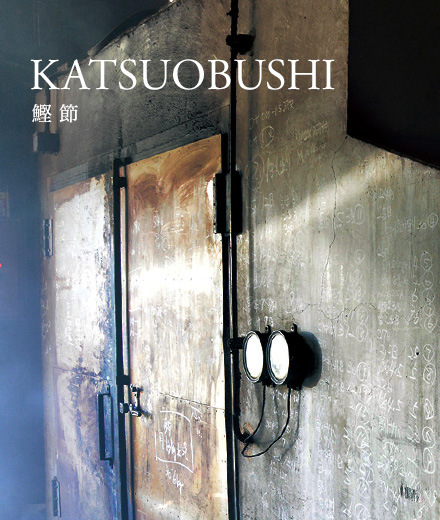-
Traditional Japanese food made from the gift of nature and craftsmanship
“Katsuobushi” has a long history. The cooking method of “katsuobush” is shown in the Japan’s oldest publication “Kojiki” as “katauo”. And it was said as samurai’s important portable ration in the time of the Sengoku period (the Age of Civil Wars). “Katsuobushi” that our forefathers established its production methods, is Japan’s unique seasoning and caloric preserved foods. It is one of the inevitable ingredients to create “washoku” culture.
“Katsuobushi” can be classified into two stages: “arabushi” and “honkarebushi”.
-
“Arabushi”, dried and smoked bonito, is made with the following process: dress a bonito, boil it well, smoke and dry it for about one month to make moisture content less than 23%. And the production of “honkarebushi” starts from here. It requires additional six months or longer to ferment and to mature by the reiteration of molding and sun drying. Moisture content of “Honkarebushi” is less than 15 to 17%. Clear high-toned sound by striking them together is the proof of high quality “katsuobushi”.
“Katsuobushi”, one of the world’s solidest foodstuffs, should be shaved and made as “kezuribushi”, flaked bonito for cooking. There are various shaving methods such as “thin shaving”, “thick shaving”, “thread shaving”, “soft shaving”, “powder shaving”, etc. in accordance with purposes and recipes like dashi stock or topping.
-
A large quantity of “umami” ingredient, inosinic acid is the most significant feature of “katsuobushi”. And it contains other nutrients valuable for prevention of lifestyle disease and aging such as high quality proteins, essential amino acid, DHA, EPA, iron, minerals, vitamins, and so on. “Katsuobushi” can be said that this is the ideal foodstuffs for adults and the good material of dietary education for children.
-
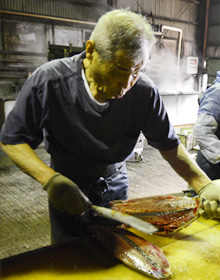
Process of making Katsuobushi
1.Cutting head off, gutting and filleting the bonito into two or four pieces.
-
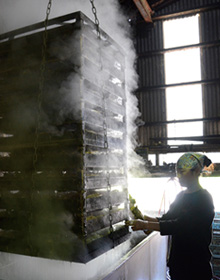
Process of making Katsuobushi
2.Place bonito fillets in a basket, then boiling and aging for a few hours to coagulate protein.
-
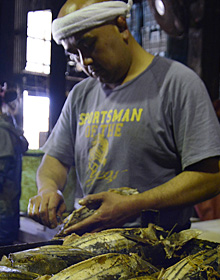
Process of making Katsuobushi
3.Peeling and deboning fillets by hand.
-
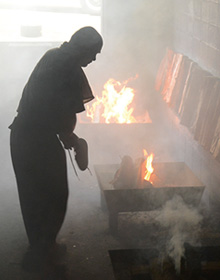
Process of making Katsuobushi
4.With burning hardwoods such as oaks, "Arabushi is made with smoking and drying bonito fillets for 6〜15 times (approx. 2〜4 weeks) to make moisture content less than 23%.
-
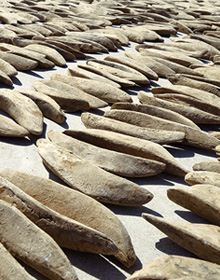
Process of making Katsuobushi
5.Polishing the surface of Arabushi to scrape off tars and fats and to shape or form as "Hadakabushi".
It requires additional six months or longer to ferment and to mature by the reiteration of molding and sun drying to make a good "Honkarebushi" that content moisture less than 17%.
- Before|
- Next

